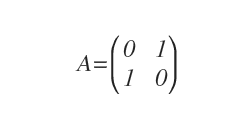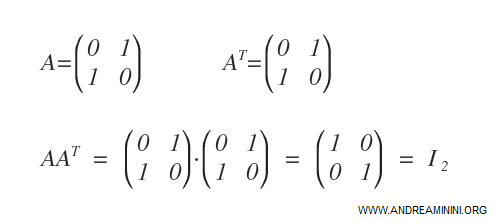Orthogonal Matrix
A matrix A is defined as orthogonal if its inverse, A-1, is equal to its transpose, AT.

The set of all n-dimensional orthogonal matrices is denoted by the symbol On.
Note. Only invertible matrices can be orthogonal, meaning orthogonal matrices form a subset of On within the set GLn(R) of invertible n x n matrices.
In an orthogonal matrix, the product of matrix A with its transpose AT equals the identity matrix In of order n.

Proof
The proof is simple; one of the key properties of invertible matrices is as follows:

For orthogonal matrices, the inverse matrix is identical to the transpose, so A-1 = AT.
This leads to the conclusion that AAT = In.
![]()
A practical example
The following square matrix is an orthogonal matrix.

To confirm this, simply multiply A by its transpose, AT.
The result of A · AT is the identity matrix I2.

Consequently, it follows that AT = A-1.

Why? This is a property of inverse matrices: the product of an invertible matrix (A) with its inverse (A-1) results in the identity matrix I. Therefore, if AAT = I and AA-1 = I, then AT = A-1.
This verifies that it is indeed an orthogonal matrix.
